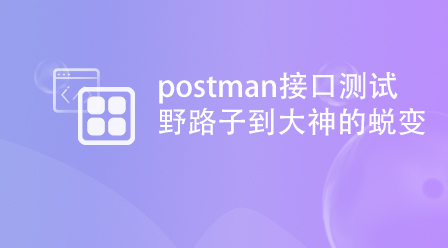Go语言的测试体验体现了其简洁高效的设计哲学,核心是使用内置的testing包,无需额外框架即可编写单元、基准和示例测试。通过遵循_test.go文件命名规范和TestXxx函数格式,结合go test命令运行测试。推荐采用表驱动测试和子测试(t.Run)提升可维护性,利用接口模拟外部依赖以实现隔离,使用sync.WaitGroup和context.Context处理并发测试,并可通过testify等辅助库增强断言和mock能力,但应优先使用原生工具以保持简洁。

Go语言的测试体验,说实话,是其设计哲学的一个缩影——简洁、高效,且直指问题核心。对我个人而言,搭建一个Golang测试环境几乎是“零成本”的事,因为Go本身就提供了极其强大的内置工具。核心观点是:Go的
testing
go test
_test.go
搭建Golang测试环境并编写测试用例,本质上是遵循Go语言的约定和利用其内置工具。
首先,你不需要安装任何额外的测试框架。只要你的系统上安装了Go环境,测试环境就已经搭建好了。Go的测试机制是完全内置的,通过
go test
编写测试用例的步骤:
立即学习“go语言免费学习笔记(深入)”;
创建测试文件: 在你的Go项目目录中,找到需要测试的源文件(例如
your_package/your_code.go
your_code_test.go
_test.go
导入testing
_test.go
testing
package your_package // 和被测试文件在同一个包
import (
"testing"
// 如果需要,导入被测试的包
)编写测试函数: 测试函数必须以
Test
*testing.T
*testing.T
// 假设我们有一个函数 Add(a, b int) int
// func Add(a, b int) int { return a + b }
func TestAdd(t *testing.T) {
// 准备测试数据
a, b := 1, 2
expected := 3
// 执行被测试函数
actual := Add(a, b)
// 验证结果
if actual != expected {
t.Errorf("Add(%d, %d) 期望得到 %d, 实际得到 %d", a, b, expected, actual)
}
}运行测试: 打开终端,导航到你的Go项目根目录或包含测试文件的目录,然后运行:
go test
这会运行当前目录及其子目录下的所有测试。
go test -v
go test -run TestAdd
TestAdd
go test -cover
go test -coverprofile=coverage.out && go tool cover -html=coverage.out
通过上述步骤,你就能轻松搭建并运行Go的测试了。我个人觉得,Go的这种“约定大于配置”的测试哲学,极大地降低了学习曲线和维护成本。
说实话,当我初次接触Go语言的测试时,最让我感到意外的是它几乎没有“框架选择”的烦恼。与其他语言生态中百花齐放的测试框架相比,Go的核心测试哲学是“少即是多”,它将大部分测试功能都集成在了标准库的
testing
主要的“框架”:testing
Go语言的内置
testing
func TestXxx(t *testing.T)
func BenchmarkXxx(b *testing.B)
func ExampleXxx()
go test
t.Run()
我个人非常偏爱
testing
testing
第三方辅助库:
虽然
testing
testing
github.com/stretchr/testify
assert
assert.Equal
assert.Nil
assert.Error
require
assert
t.Fatal
mock
go-cmp/cmp
cmp
reflect.DeepEqual
如何选择?
我的建议是:
testing
testing
testify
if actual != expected { t.Errorf(...) }testify/assert
testify/require
testify/mock
go-cmp/cmp
在我看来,过度依赖第三方库有时会带来不必要的复杂性。Go的哲学是保持简单,测试也不例外。大部分时候,
testing
编写高效且可维护的Go单元测试,不仅仅是让测试通过,更重要的是让它们能够清晰地表达意图,易于理解和修改,并且能够快速运行。这在我日常的开发工作中,是一个持续优化的过程。
遵循Go的测试文件和函数命名约定:
xxx_test.go
func TestSomething_Scenario(t *testing.T)
TestAdd_PositiveNumbers
TestDivide_ByZero
利用子测试 (t.Run
t.Run()
func TestCalculateDiscount(t *testing.T) {
t.Run("ValidDiscount", func(t *testing.T) {
// ... 测试有效折扣
})
t.Run("NoDiscountForSmallAmount", func(t *testing.T) {
// ... 测试金额过小无折扣
})
t.Run("NegativeAmount", func(t *testing.T) {
// ... 测试负数金额
})
}这比写一堆独立的
TestCalculateDiscountValid
TestCalculateDiscountSmallAmount
采用“表驱动测试”(Table-Driven Tests): 这是Go语言中编写高效、可维护测试的惯用手法,也是我个人最推荐的方式。当一个函数有多个输入输出组合时,表驱动测试能显著减少代码重复,并使添加新的测试用例变得非常容易。
func TestSum(t *testing.T) {
tests := []struct {
name string
inputA int
inputB int
expected int
}{
{"PositiveNumbers", 1, 2, 3},
{"NegativeNumbers", -1, -2, -3},
{"ZeroAndPositive", 0, 5, 5},
{"LargeNumbers", 1000, 2000, 3000},
}
for _, tt := range tests {
t.Run(tt.name, func(t *testing.T) {
actual := Sum(tt.inputA, tt.inputB)
if actual != tt.expected {
t.Errorf("Sum(%d, %d) 期望 %d, 实际 %d", tt.inputA, tt.inputB, tt.expected, actual)
}
})
}
}这种模式使得测试数据与测试逻辑分离,清晰明了。
遵循AAA原则(Arrange-Act-Assert):
关注测试覆盖率,但避免盲目追求100%: 使用
go test -cover
go tool cover -html=coverage.out
保持测试的独立性、原子性、快速性:
通过这些实践,我发现不仅能写出更健壮的代码,而且在后期维护和重构时,测试套件也能提供强大的信心和保障。
在Go语言的测试中,处理外部依赖(如数据库、网络服务、文件系统)和并发问题(goroutines, channels)是提升测试质量和可靠性的关键。这些场景往往比纯粹的单元测试更复杂,需要一些策略和技巧。
处理外部依赖:
外部依赖是单元测试的“敌人”,因为它们会使测试变得缓慢、不稳定且难以隔离。Go语言的接口(interfaces)在这里发挥了至关重要的作用。
使用接口进行解耦和模拟 (Mocking): 这是处理外部依赖最Go-idiomatic的方式。不要直接在你的业务逻辑中使用具体的外部服务实现,而是定义一个接口,描述你的代码与该服务交互所需的方法。
// 定义一个数据库接口
type UserRepository interface {
GetUserByID(id string) (*User, error)
SaveUser(user *User) error
}
// 业务逻辑依赖于接口
type UserService struct {
repo UserRepository
}
func (s *UserService) GetUserDetails(id string) (*User, error) {
return s.repo.GetUserByID(id)
}
// 在测试中,实现一个模拟的 UserRepository
type MockUserRepository struct {
GetUserByIDFunc func(id string) (*User, error)
SaveUserFunc func(user *User) error
}
func (m *MockUserRepository) GetUserByID(id string) (*User, error) {
if m.GetUserByIDFunc != nil {
return m.GetUserByIDFunc(id)
}
return nil, nil // 默认行为
}
func (m *MockUserRepository) SaveUser(user *User) error {
if m.SaveUserFunc != nil {
return m.SaveUserFunc(user)
}
return nil
}
func TestGetUserDetails(t *testing.T) {
mockUser := &User{ID: "123", Name: "Test User"}
mockRepo := &MockUserRepository{
GetUserByIDFunc: func(id string) (*User, error) {
if id == "123" {
return mockUser, nil
}
return nil, errors.New("not found")
},
}
service := &UserService{repo: mockRepo}
user, err := service.GetUserDetails("123")
if err != nil {
t.Fatalf("unexpected error: %v", err)
}
if user.Name != "Test User" {
t.Errorf("expected user name 'Test User', got %s", user.Name)
}
}通过这种方式,你可以完全控制外部依赖的行为,模拟各种成功、失败、错误场景,而无需实际连接数据库或调用外部API。
testify/mock
使用内存实现或轻量级替代品: 对于某些依赖(如数据库),可以考虑在测试中使用内存数据库(如SQLite的
file::memory:
Test Containers (容器化测试): 对于更复杂的集成测试,例如需要真实PostgreSQL或Kafka实例的场景,
Testcontainers-go
处理并发问题:
测试并发代码通常是比较棘手的,因为并发行为的非确定性可能导致测试结果不稳定。
使用sync.WaitGroup
sync.WaitGroup
func ProcessAsync(data []int, processFn func(int), wg *sync.WaitGroup) {
for _, d := range data {
wg.Add(1)
go func(val int) {
defer wg.Done()
processFn(val)
}(d)
}
}
func TestProcessAsync(t *testing.T) {
var processed []int
var mu sync.Mutex // 保护 processed slice
var wg sync.WaitGroup
processFn := func(val int) {
mu.Lock()
processed = append(processed, val*2)
mu.Unlock()
}
data := []int{1, 2, 3}
ProcessAsync(data, processFn, &wg)
wg.Wait() // 等待所有goroutine完成
// 验证结果
if len(processed) != len(data) {
t.Errorf("Expected %d items, got %d", len(data), len(processed))
}
// 进一步验证 processed 的内容
}利用context.Context
time.After
func DoSomethingWithTimeout(ctx context.Context, done chan struct{}) {
select {
case <-ctx.Done():
fmt.Println("Operation timed out or cancelled")
case <-done:
fmt.Println("Operation completed")
}
}
func TestDoSomethingWithTimeout(t *testing.T) {
done := make(chan struct{})
ctx, cancel := context.WithTimeout(context.Background(), 100*time.Millisecond)
defer cancel()
go DoSomethingWithTimeout(ctx, done)
select {
case <-time.After(200 * time.Millisecond): // 给goroutine和context一点时间
t.Fatal("Test timed out, operation did not complete or context did not cancel")
case <-ctx.Done():
if ctx.Err() != context.DeadlineExceeded {
t.Errorf("Expected deadline exceeded, got %v", ctx.Err())
}
// 成功测试了超时情况
case <-done:
// 如果操作在超时前完成,也可能是一个有效的测试场景
t.Log("Operation completed before timeout")
}
}使用go test -race
-race
go test -race ./...
避免在测试中引入不必要的并发: 如果一个功能本身不是并发的,就不要为了测试而人为地引入并发。保持测试简单,只在必要时才测试并发行为。
处理这些复杂场景时,我的经验是,清晰的架构设计(尤其是对接口的合理使用)是基础,而Go语言提供的这些工具和模式则为我们提供了强大的测试能力。
以上就是Golang测试环境搭建 编写测试用例指南的详细内容,更多请关注php中文网其它相关文章!

每个人都需要一台速度更快、更稳定的 PC。随着时间的推移,垃圾文件、旧注册表数据和不必要的后台进程会占用资源并降低性能。幸运的是,许多工具可以让 Windows 保持平稳运行。




Copyright 2014-2025 https://www.php.cn/ All Rights Reserved | php.cn | 湘ICP备2023035733号